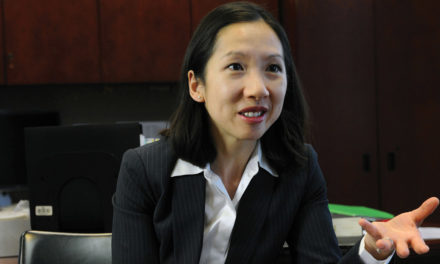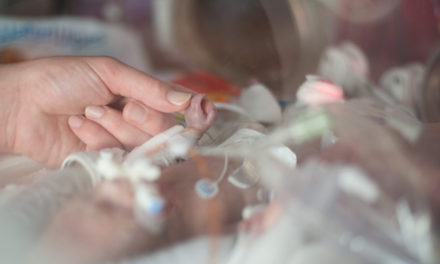For Nita Belles, dealing with human trafficking started as a class project while she worked on a master’s degree about 15 years ago. What she learned in her studies shocked her and led her to fight trafficking full-time.
Today, Belles is executive director of the anti-trafficking nonprofit In Our Backyard and author of the book In Our Backyard: Human Trafficking in America and What We Can Do to Stop It (Baker Books, 2015). She recently took time to discuss the issue with Citizen.
Citizen: How widespread is human trafficking in our country?
Nita Belles: It’s hard to get good statistics: The victims can’t raise their hands and say, “Count me.” But various studies estimate from 100,000 to 300,000 victims.
We often hear of sex trafficking, but there’s also labor trafficking—both are modern-day slavery. Often victims are subjected to both forced labor and sexual exploitation.
C: Most people probably think forced labor disappeared from this country long ago. I low does it work today?
NB: It can involve force, fraud or coercion, and can take many forms. Domestic servitude – trafficking someone as a housekeeper or nanny—often happens in nicer neighborhoods. Trafficking occurs as agricultural work or factory work or even door-to-door sales. This is sadly very common and happened in my town a few years ago: The perpetrators lured some street kids with promises of traveling, hotels and drugs for selling fake magazine subscription, while the traffickers pocketed the money.
Any kind of industry where people can make legitimate money can also involve labor trafficking. Often people are paid something, but very little. They’re subject to long hours, low pay and horrific work conditions. They’re usually in “debt bondage:” The trafficker charges them inflated prices for everything—room and board, transportation to and from work, toiletries, deodorant. They might be charged $20 for a $3 hairbrush. They’re kept beholden to the trafficker, being charged more than they can repay.
C: When might we come into contact with human trafficking without even realizing it?
NB: You might encounter someone in a grocery store, in Costco, in Home Depot, on the street—anywhere. You may see a foreign-born (person) in domestic servitude with a family who controls her. It could be in a nail salon where the person doing your nails won’t speak to you in English, but someone’s there who’s doing all their talking for them.
Always, the best thing we can do is give love to that person. I’ve been in situations where I knew someone was being trafficked—there was no doubt in my mind—but they were being watched, and it would be dangerous for them for me to ask them about it. What I could do was put on my best grandma face and look at this person with every bit of love I could.
I’ve known a lot of survivors who’ve said, “I was invisible. People didn’t look at me like I was a person.” So when someone does look at them with love, they don’t forget it.
C: Who is at risk for becoming a trafficking victim?
NB: Some groups are at higher risk, like runaways or children in the social-service system, especially for sex trafficking. But it can he anyone. It could be a straight-A student from an upper middle-class Christian home. Traffickers are predators and expert manipulators, so they look for any vulnerability. If a girl is mad at her parents or looking for excitement, that’s an opening for them. They’ll manipulate her to do what they want while she feels like she’s doing it of her own volition.
C: In the years you’ve been fighting trafficking, how have you seen the movement against it grow? What are people starting to understand now, and how far do we have to go in spreading awareness?
NB: I’m seeing progress. There’s much more awareness. Ten years ago—even five years ago—people didn’t think this happened in the United States. Now more people understand that it’s here.
I’m not sure they understand, however, that it happens to people besides foster children, runaways and immigrants. And they still don’t understand well enough what trafficking looks like and how it happens.
C: Your book includes a lot of practical tips for fighting human trafficking. How do we keep children safe?
NB: I suggest parents have their kids’ passwords, keep your kids’ cell phones in your bedrooms at night, check to see who’s talking to your child. Your children may be talking to people who seem to be peers who might be predators. There’s a lot that can happen without parents knowing, and it can happen very fast.
The most important thing to do is talk about trafficking with your children. We’ve got to help them realize what human trafficking is, what it looks like, what to do if they see it. I often tell children, you may not be the victims, but a friend or classmate may be.” Then they want to help. If they see these things happening, they need to tell a responsible adult—their mom, their dad, a teacher or a youth pastor.
C: What role can churches play in fighting trafficking?
NB: Again, it starts with talking and promoting awareness. I’ve been in church groups where people are appalled that you use the word “sex” in church. How do you warn people about any trafficking without it? We don’t have to be graphic, but people do need to know about it and talk about it in enough detail to help prevent it.
Sometimes (the problem is) the mentality that “this training doesn’t belong in church. This is where evangelize and grow people in the Lord.” But we’ve got to deal with real issues in our churches. We have a responsibility as Christians to teach our children and reach out to the world. We have to give our congregations an opportunity to serve—and the information they need to do it.
FOR MORE INFORMATION:
To learn more about In Our Backyard or for more information about how to spot the signs of trafficking, visit Inourbackyard.org. In Our Backyard: Human Trafficking in America and What We Can Do to Stop It is available through https://store.focusonthefamily.com
Originally published in the May 2017 issue of Citizen magazine.






